Peeling frustrating hard boiled eggs is a true test of patience! We have been there. We know the pain and the struggle, which is why we set out on a quest to find a reliable method for easy-to-peel, hard boiled eggs.
There are a few cooking methods that will achieve this, but they all have the same goal – a peel that comes off easily. The pesky part of the hard boiled egg is the membrane between the egg white and the egg shell. If the the membrane attaches to the egg white during cooking, the egg is impossibly hard to peel.
So, the secret to egg success is adhering the membrane to the shell instead. These tips help ensure this happens, resulting in easy-to-peel egg success.
Use Aged Eggs
Over time, air permeates the shell of the egg, which causes the membrane to dry. Aging the eggs by a week or more results in eggs that are easier to peel.
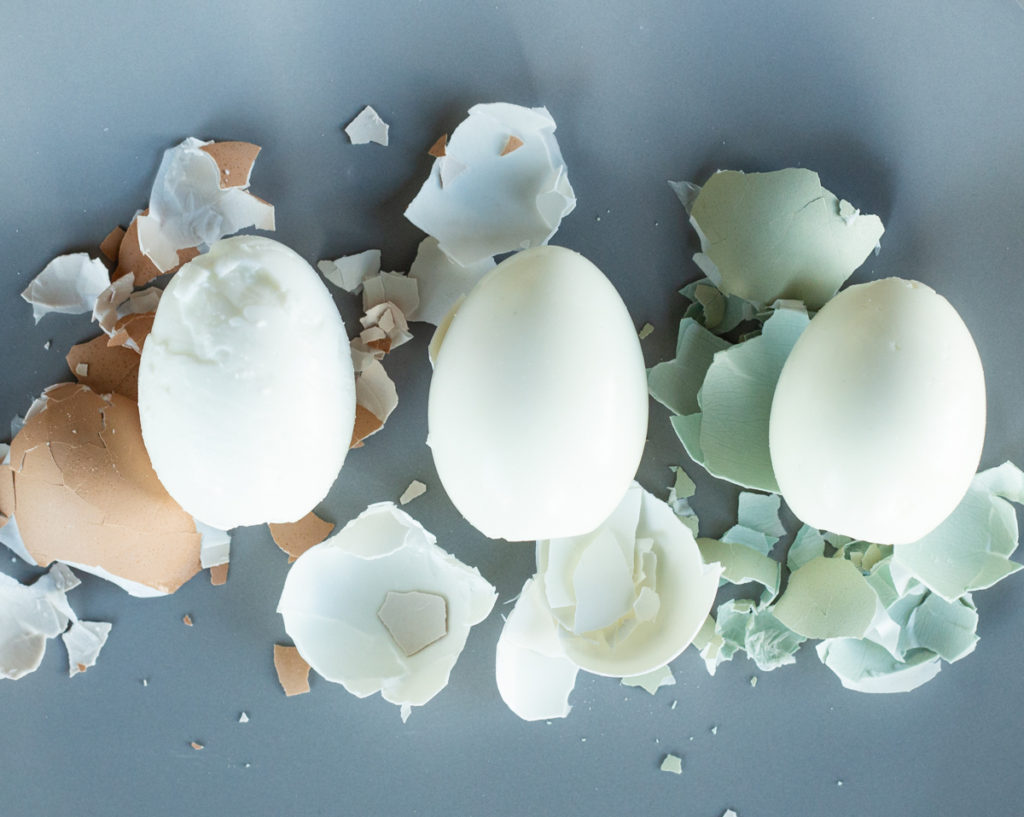
If you’re using farm fresh eggs, leave them in your fridge for a bit before hard boiling them. As seen in the picture above, the two eggs on the outside are farm fresh eggs – only one day old! They were cooked the same way as the egg in the middle, which is two week old, store-bought egg. The farm-fresh eggs were definitely more difficult to peel. They took small pieces of the egg white off with the shell. The store-bought egg peeled so easily!
If you’re using store-bought eggs, they have most likely aged enough at the store. To make sure, you can check the coding on the egg carton – it will tell you when the eggs were packaged. Find the numbers stamped on the egg carton. First, you’ll see a “Use By” or “Best By” date. Below that, is the plant number. It begins with a P, followed by 4-5 digit number. Next to the plant number is a three digit number. This is what you need! This tells you the exact day those eggs were packaged.
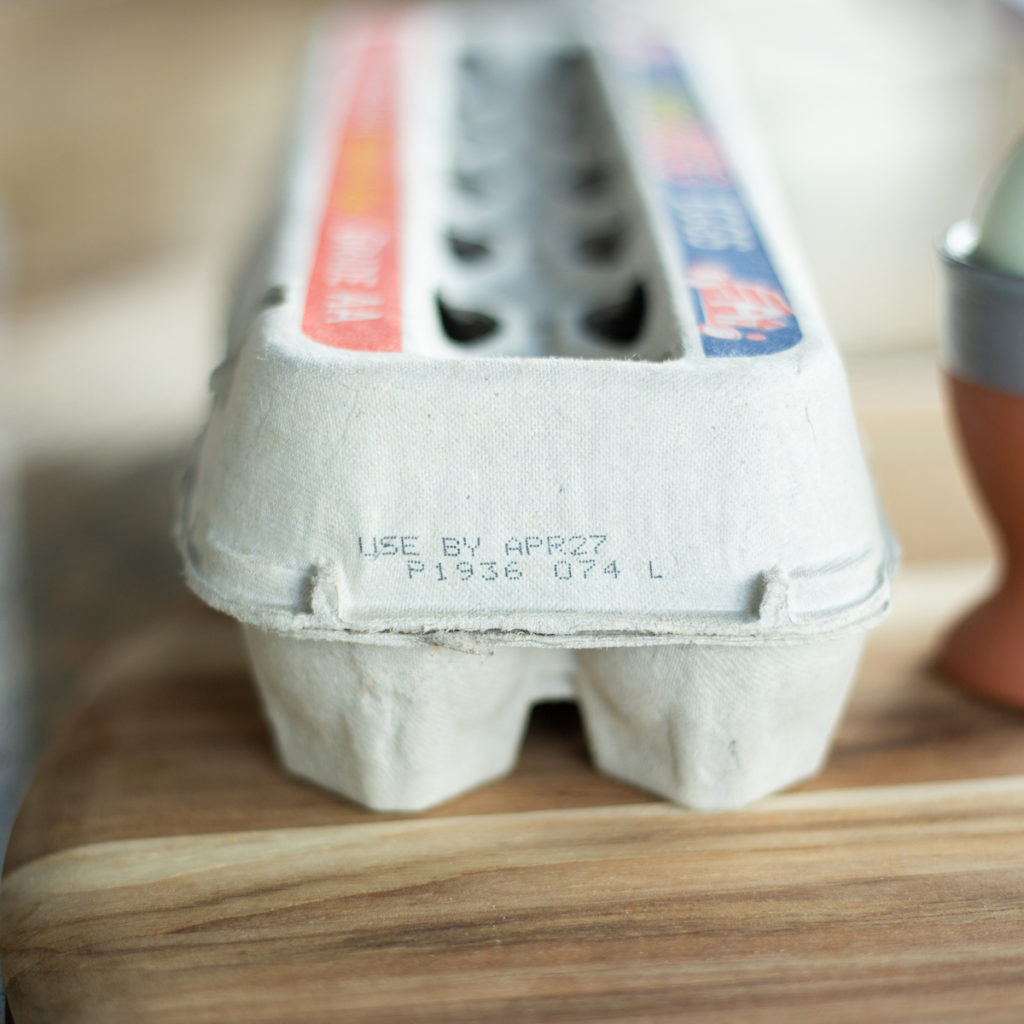
When you find that number, you’ll know exactly how old the eggs are. These eggs were packaged on the 74th day of the year (March 14th – use Google!). We purchased them on March 30th, so they were 16 days old when we bought them. If the eggs are packaged over seven days ago, they are good to go and ready to cook. If they aren’t quite old enough, let them age for a few days and they will be easier to peel.
Start them Hot
In order to detach the membrane from the egg white, you need to begin cooking it quickly. This will cause it to attach the egg shell instead. The way you accomplish this is to begin cooking in hot water.
When you begin with cold water, the membrane slowly hardens and sticks to the egg white. But if you heat the water first and then add the eggs, it shocks the membrane and it pulls aways from the egg white and adheres to the shell.
We have found to methods for accomplishing this – the boil method and the steam method.
Cool them Quick
After cooking, the eggs need to cool quickly in order to keep the membrane attached to the shell. The best way to do this is to prepare an ice bath. When the eggs are done cooking, quickly plunge the eggs in the ice bath. This will stop the cooking and cool the membrane, resulting in perfectly cooked, easy-to-peel eggs.
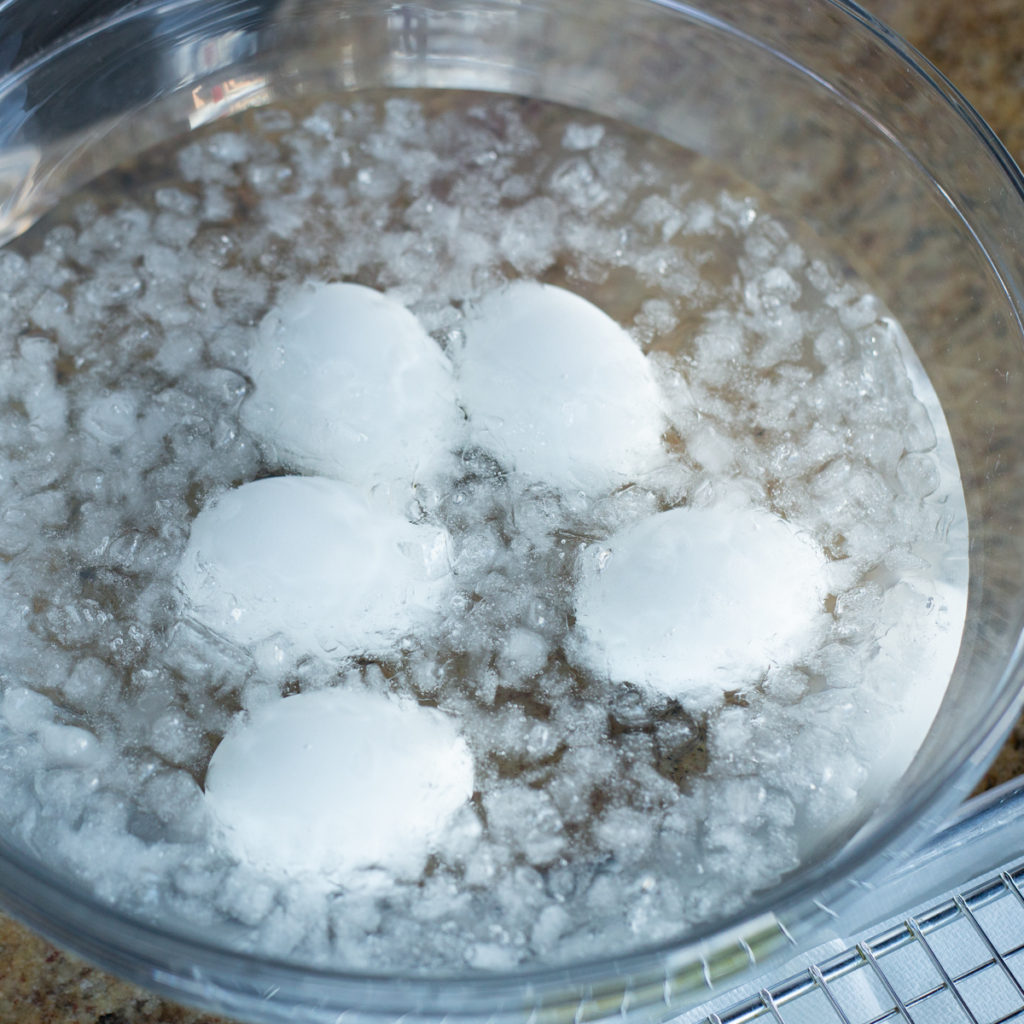
Leave the eggs in the ice water for 15 minutes and they are good to go.
Peel from the Bottom
When it comes time to peel the egg, start peeling from the wide end of the egg. For *most* eggs, there will be a small pocket of air in that region. If you begin peeling from there, the membrane will easily move away from the egg white. There seems to be a bit more moisture there, which aids in the peeling as well.
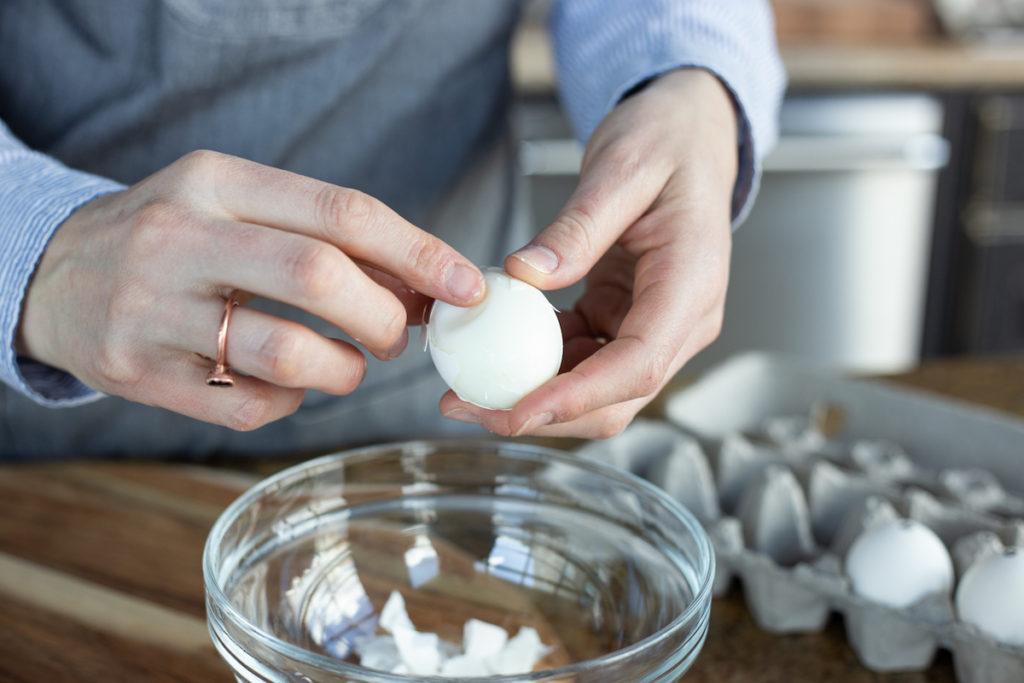
Tap the base of the egg on the counter to break the shell. Then peel it away! You can also peel the egg under a stream of cool water, which keeps the egg moist and clean during the peeling process.
So, there you have it! Use old eggs, start them hot, cool them quickly, and peel from the base of the egg for your best chances for achieving easy-to-peel, hard boiled eggs.
With those tips in mind, here are our best tricks for boiling eggs:
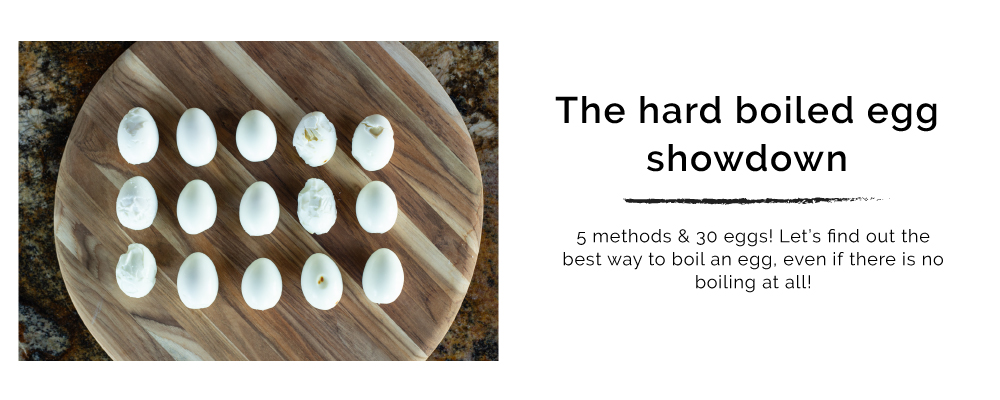



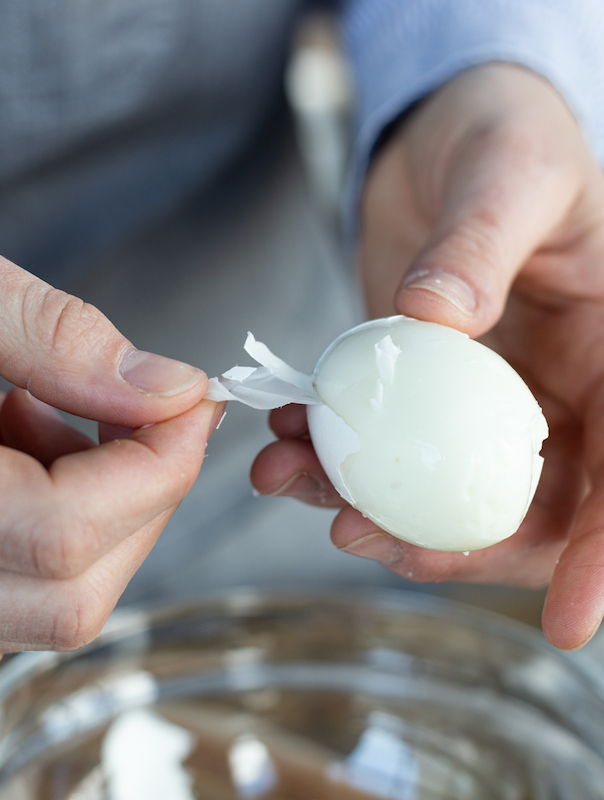
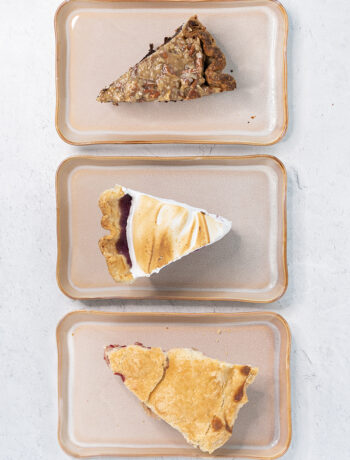
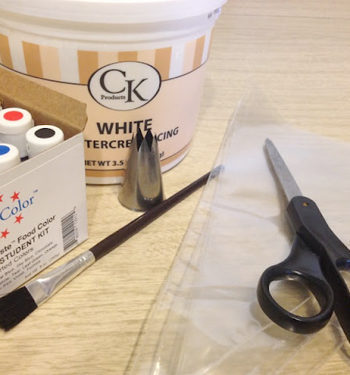

No Comments